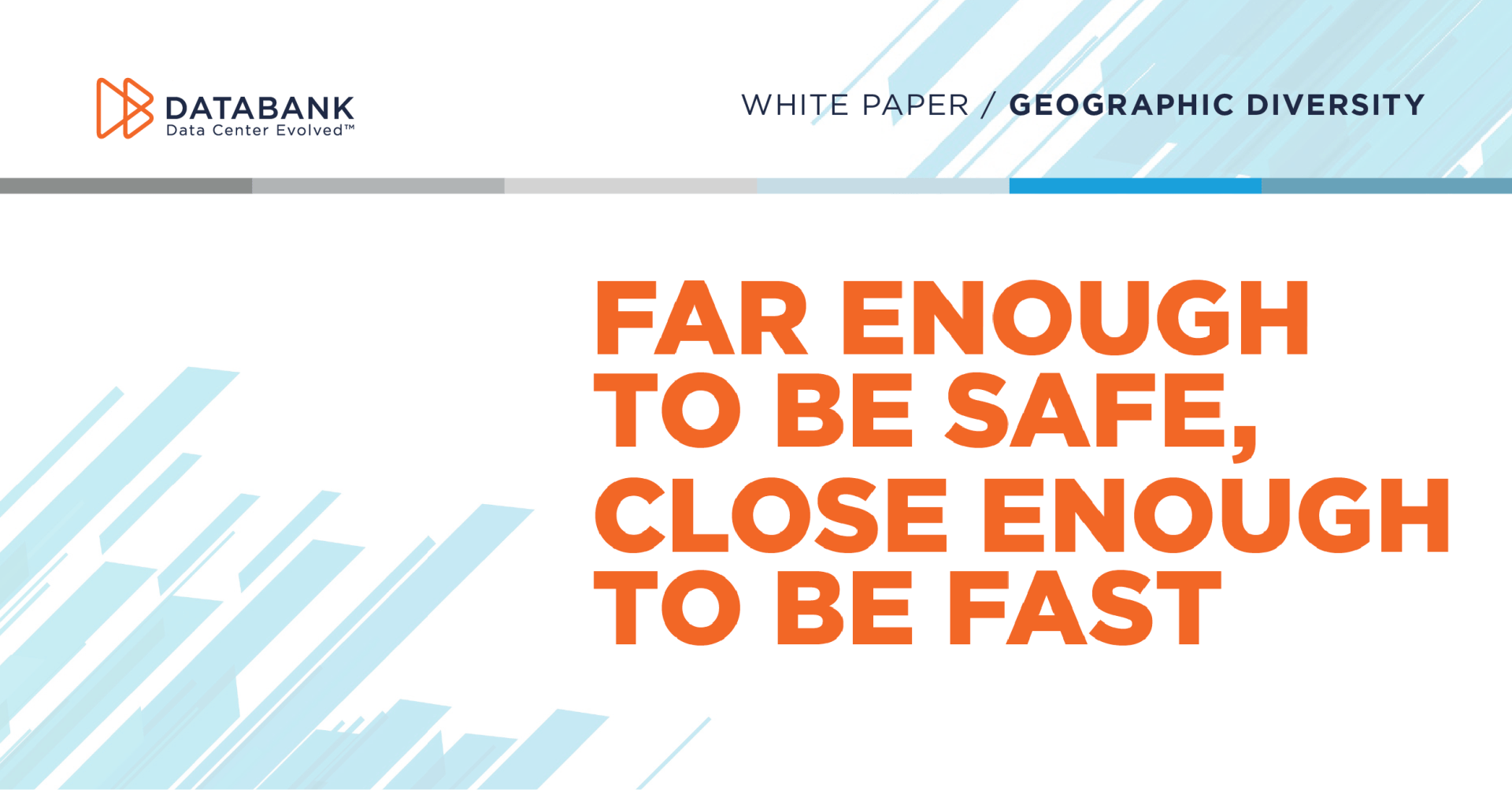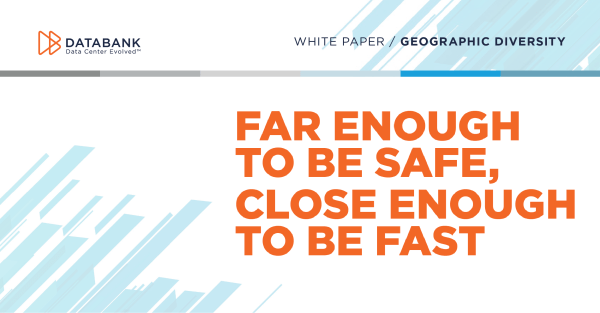

Determining the Best Primary and Secondary Homes for Your Most Important IT assets
Your worst fear – disaster strikes and you need to put your disaster recovery (DR) plan into place immediately. Fortunately, with a few clicks, you fall back to your secondary site, and your business continues on with little to no disruption to your internal operations or customers. Meanwhile, you are able to drive to your secondary site and oversee the operations and maintenance of your IT infrastructure until your primary is restored. Mission-critical IT operations can be impacted by disasters that are both naturally occurring, such as pandemics, hurricanes, earthquakes, tornados, floods, or wildfires – as well as those that are man-made, including cyber attacks, terrorism or the inadvertent failure of infrastructure systems like power grids.
With so many scenarios, it is not a matter of “if, but rather “when”, a man-made or natural disaster will affect your critical infrastructure. Having a strong DR plan is crucial for any business – both large and small – and the most important components of that plan are the strategic geographic locations of your primary and secondary sites to minimize overall risk and, ultimately, IT infrastructure downtime in the event of a disaster.
Balancing the Risk Factors with Your Primary Site Selection
There are several considerations when determining an optimal primary data center to house your IT assets, with geographic location topping off the list as the most important. Not only consider the proximity to your engineering team and access to power and connectivity but conduct a risk assessment of what disasters are most likely to occur in your current location. Keep in mind that even if a facility is fully-fortified, you also need to take into account the impact that any potential evacuation orders may have on your operations.
Regional climate should also be considered – facilities located in hot and humid areas require a significant amount of cooling, which is not only costly but also introduces a level of risk when chillers, air conditioner units, and air handlers are running at full capacity all day. On the other end of the spectrum, temperatures that get too cold can lead to thermal shutdowns and high levels of humidity that can lead to water condensation, which leads to short circuits and potential for rust and corrosion.
There is arguably no “perfect” location for a primary data center because a completely risk-averse location may be thousands of miles away but have latency issues, while a facility conveniently down the street from your office may be in an area prone to hurricanes. Ultimately, it is important to assess all the “what if’s” and balance the risk factors to find the best primary site to fit your organization’s requirements.
Determining a Secondary Site: Far Enough to Be Safe & Close Enough to Be Fast
Your recovery site should be far enough from your primary that it doesn’t face the same risks in the case of a disaster. The optimal distance will vary depending on a risk assessment of your primary site and the nature of your application/data – those at high risk of natural disasters may require a considerable distance, while those with a lower risk of a natural disaster may seek out a site nearby on a different power grid or simply connected to an alternate carrier hotel in the market to minimize localized risk.
While creating distance is key, the location of your secondary should also be close enough that it meets your latency requirements and is within an easy travel distance in the event your team needs to be onsite to operate and maintain your systems.
When evaluating a secondary facility, consider these factors:
The Next Step to Integrating Geographic Diversity into Your DR Plan
Your business needs to safeguard data so no matter what disaster you face, your data will be protected, and your business can keep running as though nothing happened.
Click here to download DataBank’s newest white paper, “A Field Guide for Adding Geographic Diversity to Your Disaster Recovery Plan”, for a more in-depth look at factors to consider in your DR plan to protect your data against man-made and natural disasters.

Discover the DataBank Difference today:
Hybrid infrastructure solutions with boundless edge reach and a human touch.